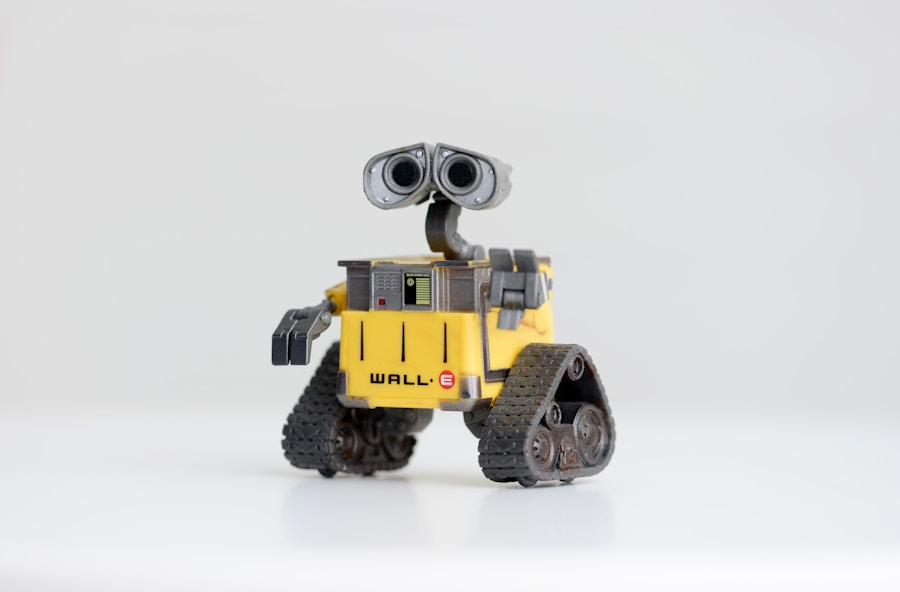As I delve into the fascinating world of robotics, I find myself captivated by the concept of general-purpose robots. These versatile machines are designed to perform a wide range of tasks, adapting to various environments and requirements. Unlike specialized robots that are limited to specific functions, general-purpose robots possess the flexibility to tackle multiple challenges, making them invaluable in today’s rapidly evolving technological landscape.
Their ability to learn and adapt is a testament to the advancements in artificial intelligence and machine learning, which have propelled these robots into the forefront of innovation. The rise of general-purpose robots marks a significant shift in how we approach automation and efficiency across various sectors. I am particularly intrigued by their potential to enhance productivity while reducing human labor in repetitive and hazardous tasks.
As I explore the implications of these robots, I realize that they not only promise to streamline operations but also raise important questions about the future of work and the role of humans in an increasingly automated world. The journey of understanding general-purpose robots is not just about technology; it is also about envisioning a future where humans and machines collaborate harmoniously.
Key Takeaways
- General-purpose robots are versatile machines designed to perform a wide range of tasks, from manufacturing to healthcare and beyond.
- In manufacturing, robots are used for tasks such as assembly, welding, and painting, increasing efficiency and precision while reducing labor costs.
- In agriculture and farming, robots are revolutionizing the industry by performing tasks such as planting, harvesting, and monitoring crop health.
- Automation in logistics and warehousing is improving efficiency and accuracy in tasks such as sorting, packing, and inventory management.
- Advancements in healthcare and medical services are utilizing robots for tasks such as surgery, patient care, and medication dispensing, improving patient outcomes and reducing human error.
Applications in Manufacturing
In the realm of manufacturing, I have observed that general-purpose robots are transforming production lines and redefining efficiency. These robots can perform a multitude of tasks, from assembly and welding to quality control and packaging. Their adaptability allows manufacturers to reconfigure their operations quickly, responding to changing market demands without the need for extensive downtime or retraining of personnel.
This flexibility is particularly beneficial in industries where product life cycles are short, and rapid prototyping is essential. Moreover, I find it fascinating how general-purpose robots enhance precision and consistency in manufacturing processes. Unlike human workers, who may experience fatigue or variability in performance, these robots maintain a high level of accuracy throughout their operational lifespan.
This reliability not only improves product quality but also reduces waste and operational costs. As I reflect on these advancements, I recognize that the integration of general-purpose robots into manufacturing is not merely a trend; it represents a fundamental shift towards smarter, more efficient production systems that can adapt to the complexities of modern economies.
Impact on Agriculture and Farming

Turning my attention to agriculture, I am struck by how general-purpose robots are revolutionizing farming practices. These robots are equipped with advanced sensors and AI capabilities that enable them to perform tasks such as planting, harvesting, and monitoring crop health with remarkable efficiency. By automating labor-intensive processes, they alleviate some of the burdens faced by farmers, allowing them to focus on strategic decision-making and resource management.
Additionally, I am fascinated by the role of general-purpose robots in promoting sustainable farming practices. With their ability to analyze soil conditions and optimize irrigation systems, these robots contribute to more efficient use of water and fertilizers. This not only enhances crop yields but also minimizes environmental impact—a crucial consideration in an era marked by climate change and resource scarcity.
As I explore the intersection of technology and agriculture, I am encouraged by the potential for general-purpose robots to support food security while fostering sustainable practices that benefit both farmers and consumers.
Automation in Logistics and Warehousing
| Metrics | Statistics |
|---|---|
| Percentage of warehouses using automation | 65% |
| Reduction in picking errors with automation | 40% |
| Percentage of logistics companies using automated vehicles | 75% |
| Increase in warehouse productivity with automation | 25% |
In logistics and warehousing, I have witnessed firsthand how general-purpose robots are streamlining operations and enhancing efficiency. These robots are capable of navigating complex environments, managing inventory, and even fulfilling orders with minimal human intervention. Their ability to work around the clock without fatigue significantly increases throughput, allowing companies to meet customer demands more effectively.
Moreover, I find it intriguing how these robots can be integrated with existing warehouse management systems to optimize workflows. By analyzing data in real-time, they can identify bottlenecks and suggest improvements, leading to more efficient use of space and resources. As I consider the implications of this automation, I realize that general-purpose robots are not just tools; they are integral components of a larger ecosystem that drives innovation in supply chain management.
The future of logistics is undoubtedly intertwined with the capabilities of these adaptable machines.
Advancements in Healthcare and Medical Services
The impact of general-purpose robots extends into the realm of healthcare, where they are making significant strides in improving patient care and operational efficiency. I am particularly impressed by their ability to assist in surgeries, where precision is paramount. Robotic surgical systems can perform intricate procedures with minimal invasiveness, resulting in quicker recovery times for patients.
This advancement not only enhances surgical outcomes but also alleviates some of the pressures faced by healthcare professionals. Furthermore, I find it inspiring how general-purpose robots are being utilized for patient monitoring and rehabilitation. These robots can assist patients with mobility challenges or provide companionship to those in need of social interaction.
By taking on routine tasks such as medication delivery or vital sign monitoring, they free up healthcare workers to focus on more complex patient needs. As I reflect on these developments, I am optimistic about the potential for general-purpose robots to enhance the quality of care while addressing some of the pressing challenges faced by healthcare systems worldwide.
General-Purpose Robots in Construction and Infrastructure

The Impact of General-Purpose Robots in the Construction Industry
General-purpose robots are revolutionizing traditional practices in construction by performing various tasks, such as bricklaying and site surveying, with remarkable efficiency. These machines can operate in hazardous environments, reducing risks and increasing productivity on construction sites.
### Redefining Construction Possibilities
General-purpose robots are not only augmenting human labor but also redefining what is possible in construction. Their potential to contribute to smart city initiatives is fascinating, as they can assist in monitoring infrastructure health and optimizing resource allocation for urban development projects through data collection and analysis.
### Sustainability and Efficiency in Urban Planning
The integration of robotics into construction aligns with broader trends towards sustainability and efficiency in urban planning. As we look to the future of construction, it is exciting to consider the possibilities they bring in creating safer, smarter environments for communities.
Revolutionizing Service Industries
The service industry is another area where general-purpose robots are making significant inroads. From hospitality to retail, these adaptable machines are enhancing customer experiences while streamlining operations. For instance, I have seen how robots can assist with tasks such as order taking or inventory management in restaurants and stores, allowing human employees to focus on providing personalized service.
Additionally, I find it intriguing how general-purpose robots can be programmed to learn from customer interactions, improving their responses over time. This capability not only enhances customer satisfaction but also provides valuable insights into consumer behavior that businesses can leverage for strategic decision-making. As I explore this intersection of technology and service delivery, it becomes evident that general-purpose robots are not merely replacing human workers; they are augmenting their capabilities and enabling businesses to thrive in an increasingly competitive landscape.
The Future of General-Purpose Robots
As I contemplate the future of general-purpose robots, I am filled with a sense of anticipation about the possibilities that lie ahead. The rapid advancements in artificial intelligence and machine learning suggest that these robots will become even more capable and intelligent over time. I envision a future where they seamlessly integrate into various aspects of our lives—enhancing productivity at work, improving healthcare outcomes, and even providing companionship at home.
However, this future also raises important questions about ethics and employment. As general-purpose robots become more prevalent, society must grapple with the implications for job displacement and economic inequality. It is crucial that we approach this transition thoughtfully, ensuring that we harness the benefits of automation while also supporting those who may be adversely affected by these changes.
In conclusion, my exploration of general-purpose robots has revealed their transformative potential across multiple sectors. From manufacturing and agriculture to healthcare and service industries, these adaptable machines are reshaping our world in profound ways.
The journey is just beginning, and I am excited to see where it leads us next.
General-purpose robots are becoming increasingly important in various industries, including remote work. As highlighted in this article, the digital age has seen a rise in the use of robots to streamline tasks and improve efficiency in remote work settings. These robots can perform a wide range of functions, from data entry to customer service, making them valuable tools for businesses looking to adapt to the changing landscape of work. The integration of technology, as discussed in another related article, is crucial for the success of remote work initiatives, and general-purpose robots play a key role in this transformation.



